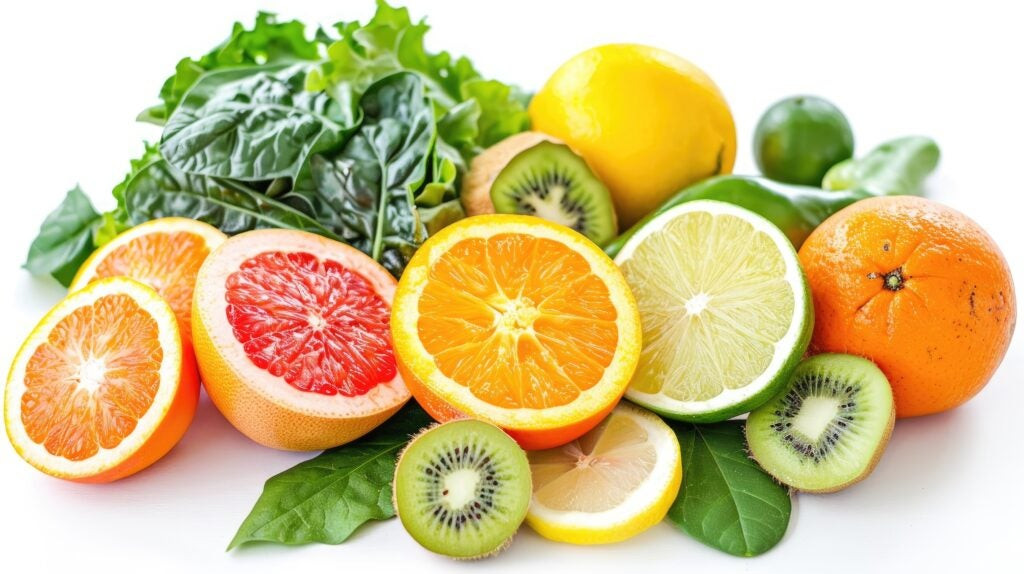Vitamin C, also known as ascorbic acid, is an essential nutrient that our bodies need to function properly. Unlike many animals, humans cannot produce vitamin C on their own, so we must obtain it through our diet or supplements. This water-soluble vitamin plays a critical role in numerous bodily functions, from supporting our immune system to acting as a powerful antioxidant.
For decades, vitamin C has been recognized for its health benefits. Even before it was officially discovered in 1932, the importance of citrus fruits in preventing scurvy was well-known, saving countless lives of sailors on long voyages. Today, we understand that vitamin C is vital for much more than just preventing deficiency diseases.
Vitamin C is crucial for immune function, wound healing, and acts as a potent antioxidant, combating harmful free radicals in the body. It is also essential for the production of collagen, a vital protein that forms the building blocks of connective tissues throughout the body, including skin, bones, tendons, and blood vessels. Furthermore, vitamin C is involved in the synthesis of certain hormones and neurotransmitters that are vital for brain and nerve function.
While some people turn to high doses of vitamin C supplements, it’s important to understand how much we truly need and whether excessive intake offers additional benefits or potential drawbacks.
Recommended Daily Intake of Vitamin C
The recommended dietary allowance (RDA) for vitamin C varies based on age and sex. For adults aged 19 and older, the RDA is 90 mg per day for men and 75 mg per day for women. During pregnancy, the RDA increases to 85 mg daily, and for breastfeeding women, it rises to 120 mg daily. Smokers require an additional 35 mg of vitamin C per day due to the increased oxidative stress caused by smoking.
It’s also important to be aware of the tolerable upper intake level (UL) for vitamin C, which is set at 2000 mg per day. Consuming vitamin C in excess of this amount may lead to gastrointestinal issues like stomach upset and diarrhea. While high doses are sometimes used in specific medical settings under supervision, for most individuals, obtaining vitamin C through a balanced diet rich in fruits and vegetables is the most effective and safe approach.
Vitamin C Absorption and Megadoses
Our bodies are designed to absorb vitamin C efficiently from food. However, the absorption rate decreases as intake increases significantly. Studies show that absorption can drop below 50% when consuming doses exceeding 1000 mg at once. In healthy individuals, excess vitamin C is generally excreted in urine, minimizing the risk of toxicity from food sources.
While megadoses of vitamin C are not typically toxic, intakes above 3000 mg per day have been linked to adverse effects in some individuals, including diarrhea, increased risk of kidney stones (especially in those with pre-existing kidney conditions), elevated uric acid levels, and increased iron absorption, which can be problematic for people with hemochromatosis. It’s crucial to remember that obtaining vitamin C from whole foods provides a balanced and safe way to meet your daily needs without the risks associated with excessive supplementation.
Top Food Sources of Vitamin C
The best way to ensure you’re getting enough vitamin C is by incorporating a variety of vitamin C-rich foods into your diet. Fruits and vegetables are the powerhouse sources of this essential vitamin. Here are some excellent examples:
-
Citrus Fruits: Oranges, lemons, grapefruits, and limes are perhaps the most well-known sources of vitamin C. Enjoy a glass of fresh orange juice or add lemon to your water for a vitamin C boost.
-
Bell Peppers: Bell peppers, especially red and yellow varieties, are surprisingly high in vitamin C, often containing more than citrus fruits. Add them to salads, stir-fries, or enjoy them as a crunchy snack.
-
Strawberries and Kiwi: These delicious fruits are packed with vitamin C and other beneficial nutrients. Enjoy them in smoothies, fruit salads, or as a healthy dessert.
-
Tomatoes: Tomatoes are a versatile source of vitamin C, whether eaten raw in salads, cooked in sauces, or enjoyed as juice.
-
Cruciferous Vegetables: Broccoli, Brussels sprouts, cabbage, and cauliflower are all excellent sources of vitamin C. Roasting, steaming, or stir-frying these vegetables can help retain their vitamin C content.
-
White Potatoes: While often overlooked, white potatoes, especially with the skin, contribute to vitamin C intake, particularly when consumed regularly.
By including a variety of these foods in your daily meals, you can easily meet your vitamin C requirements and enjoy the numerous health benefits this vital nutrient provides. Focusing on whole food sources not only ensures adequate vitamin C intake but also provides a wealth of other essential vitamins, minerals, and fiber for overall health and well-being.



